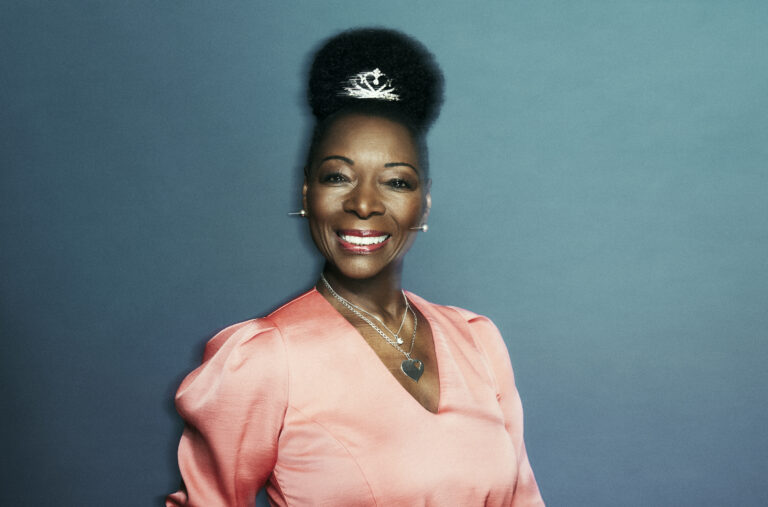
An interview with DEI changemaker Kyle Bergum:
Kyle began his career in technology 25 years ago and since then has steadily worked as a DEI changemaker for those with disabilities in the workplace.
Kyle has 5% vision.
Q: You now work for Calix, but you began your career in technology more than 25 years ago, including seven years at Microsoft as well as with Deloitte and more recently with Petro-Canada. How has assistive technology improved these last two decades?
A: “I realised long ago that I’d never be the pizza delivery driver; I knew then that I’d have to make my living as a knowledge worker. Throughout my life I’ve seen many of the adaptive solutions for low vision – from the early text to speech solution of IBM and Sperry on the mainframe to the accessibility features in Windows and the Mac. I’ve tried large print and CCTV devices. I don’t use any of them!
“The one thing I do use is Kurzweil 3000 to read books. Reading books is hard and expensive; large-print and Braille are not adopted widely enough to provide interesting or relevant content to me personally or professionally.
“So instead of just buying a book and reading it, I:
- Cut the binding off – I have a guillotine
- Scan it, using duplex auto feed scanning
- Ingest it to Kurzweil 3000
- Read it with Kurzweil 3000
“Kurzweil 3000 is brilliant. It provides a multisensory audible and visual reading experience that I find very valuable. But the end-to-end value chain for reading is expensive – at around $10,000 dollars!
“How I ended up accommodating myself in life on my own without adaptive technology is a tool bag of techniques. I use memory mapping and models to provide context both physically and intellectually. These models enable me to deconstruct experience and interact with it quickly. I deal with the world in icons from a macro point of view. My ability to deal with the granular world is extremely limited; I can’t see punctuation or letters, instead I function at the macro or iconic level.
“You go for coffee at the store with the big green dot and the white line – Starbucks. My day is managed through managing my energy curve: pain, energy, fatigue, sight – what I call PEFS – where:
Sight = Energy / pain + fatigue
Large print, CCTVs, screen readers, and many other accommodations are too slow or require too much energy or time.
What works for me is:
- A large screen – I use a 65-inch TV
- Ergonomic keyboard – either a Maltron or Kinesis
- Ergonomic chair – Herman Miller Aeron
- Sit/stand desk
“The irony isn’t lost on me that I get paid for how I accommodate my disability! That is, my problem-solving and my ability to adapt and find ways to get things done – in addition to the deep insights provided by my different point of view.”
Q: How important is technology for creating inclusive workplaces? Do you think the recent trend towards flexible and home working has been helpful for people with disabilities or is it marginalising them further?
A: “Disability and technology are not a one-size-fits-all solution. Technology will not eliminate the disability or “cure” the disability. Technology will enable to expand cases where a disabled person can add value.
“At the beginning of my career, I appreciated processes that “prescribed” as part of an assessment technology to enable my work. With experience, I find the assessment process frustrating and handicapping. Companies will often prescribe based on a standard model which [will work] if you fit the parameters of the model but if you don’t, you won’t be accommodated.
“I’ve had assessors tell me I don’t know anything about being disabled or living with one. Really? I live with it. They only read about it. I assume that a prescriptive approach to accommodation comes from a legal wish to limit and define reasonable accommodation. Where the investment of time and money would be better spent, is by listening to what the individual will benefit from and use. Each of us is different. For me, technology enables me to work effectively longer each day and increasing my productivity.
“Remote work is amazing, for the most part. My ergonomics are better at home as I have a dedicated, configured place for me to do my best work. The time, energy and expense of creating one at an office is doubly expensive.
“Travelling with accommodations is hard work. I have a 30-inch monitor in a hard case with a keyboard that I travel with. Which means I have another 20kg of luggage and another big bag to lug around – but it means I can do work on the road. The logistics of not having to commute are appreciated – it buys me back three hours a day. But it’s also very isolating. I work in a totally remote company, and I will never meet most of the people I work with in person. No informal lunches or coffee experiences, the social interactions I miss.”
Q: You have experience of living and working in the USA as well as Canada. Can you share your experience of being blind in the workplace in both countries?
A: As a generalisation I find knowledge and acceptance to be geo-location specific. It’s not a consistent experience, except Ontario – where disability awareness and accommodation, from my point of view, is the best in the country.
“Where I live, every day I have at least one micro-aggression and many think my white cane is anything but a white cane – ranging from an orchestral baton to a gulf club to a pedometer!
“The US on the other hand as a baseline seems to be much more culturally aware of disability and its impacts. The flip-side is the hiring process and disclosure. I always disclose my disability in the first interview; it avoids the discussion in six months where the hiring manager decides they’re suddenly uncomfortable with a person with disabilities.
“In the US because of the ADA [The Americans with Disabilities Act], I’ve found you need to be beyond qualifications for a role to get hired to account for the accommodation requirements. In Canada I accommodate myself: I can’t rely on a company to do it for me.”
Q: What about the importance of employee resource groups (ERGs)?
A: “An advantage of belonging to an ERG is that you don’t have to explain yourself. Those negative experiences you’ve had – others have had them too. You don’t have to explain them and provide the context. It’s useful to talk about what didn’t work so well. And there’s the flip-side too – when you find others who have had a positive experience you can share.
“Recently, I ran a half marathon on a trail and I was talking to one of the volunteers on the course about how difficult it was. They were fully sighted and couldn’t understand me when I talked about the unpredictability of the terrain. For me, it was more mentally exhausting than physically exhausting but the volunteer just didn’t understand.
“In the context of an ERG, you don’t have to explain all that.”
Q: The pace of change in the workplace for people with disabilities is the slowest of all aspects of diversity and inclusion, and it is often the lowest priority for workplace managers. Are you hopeful for the future? What do you predict the employment landscape will be like for people with disabilities over the next ten years?
A: “With the changes in demographics and the shrinkage of the workforce due to retirement and changes from the pandemic, there are more opportunities professionally for anyone, including people with a disability, to work.
“I’ve never supported a professional model where thought and execution within a company are homogeneous: the competitive advantage of a heterogeneous workplace can’t be overstated.
“Each of us brings our unique self to work and that value can’t be overstated. An idea or an accomplishment always is achieved through the actions of many, not just an individual. Can you imagine the pyramids being built by one person?”
Q: Finally, as well as preparing for your second marathon, you are a professional voice over artist – and your other hobby is acting and singing. Is there anything you can’t do?
A: “I really enjoy amateur dramatics and have been in the The Mikado, Annie, Guys and Dolls, The Marriage of Figaro and La Boheme.
“Dido and Aeneas was the most amazing. We moved the audience to different parts of a 200-year-old building of university.
“It was one of the most amazing experiences I’ve ever had.
“I’m working on releasing recordings of show tunes. It’s my dream to sing some tenor arias.”





